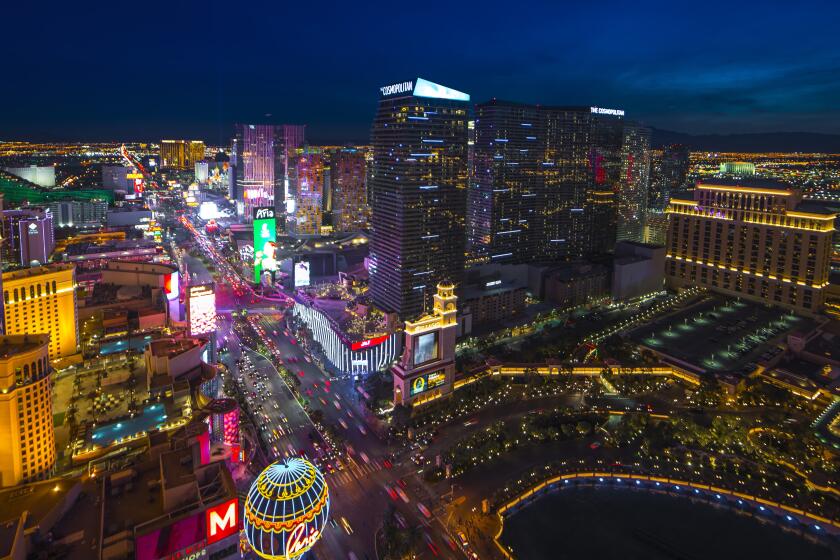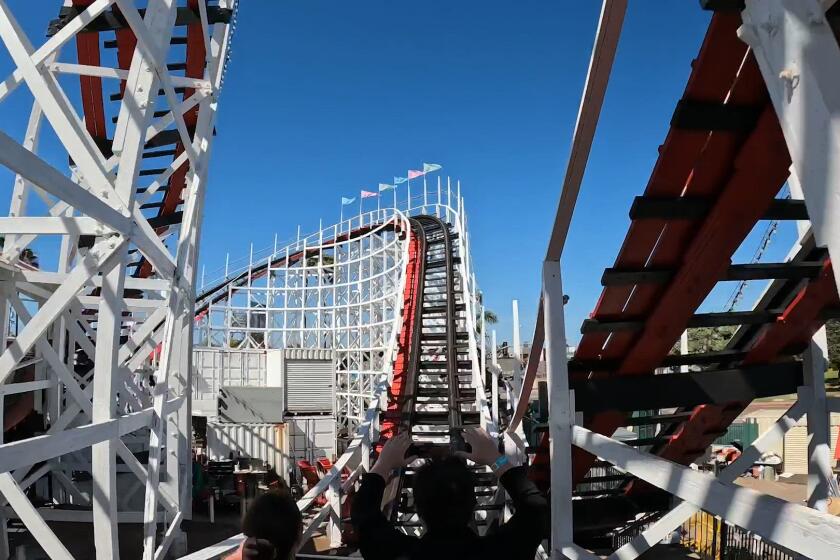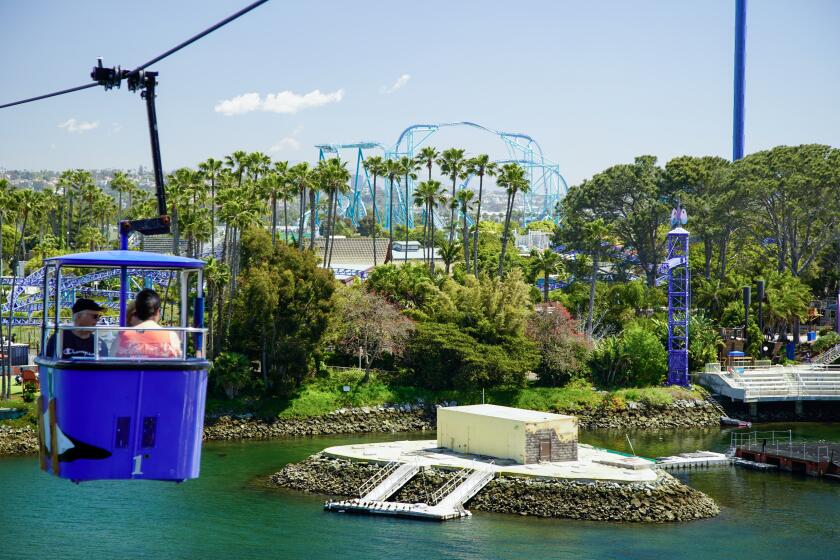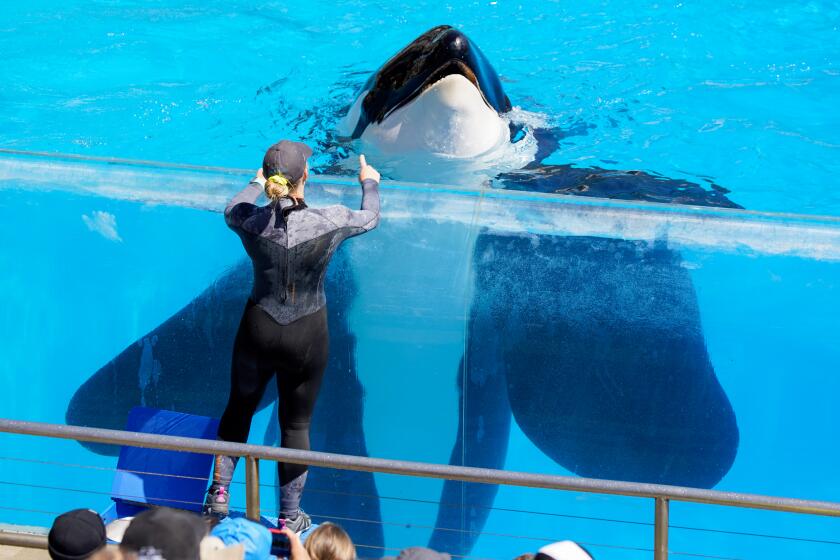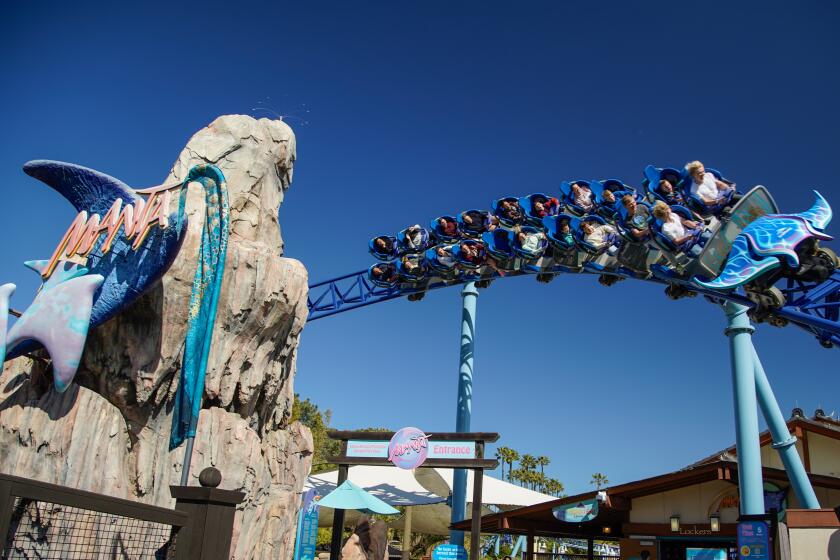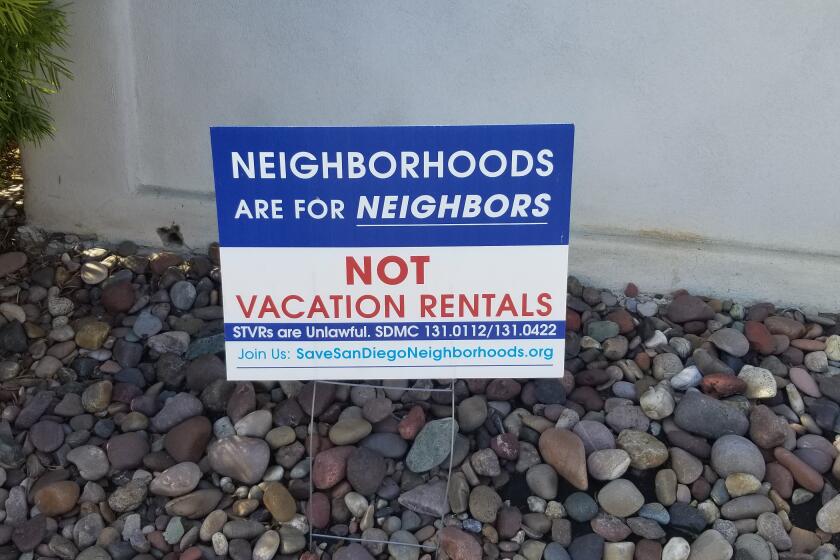Legoland the first with new high-tech ride
Ninjago lets riders use hand gestures to combat villains
With the help of some deft karate chops, a well-placed fireball hurled at ferocious villains and a set of 3-D glasses, Legoland is hoping to upend the hypercompetitive world of theme park attractions — for now.
When Ninjago, the Carlsbad park’s latest Lego-inspired attraction, opens Thursday, its 4-D dark ride will be the first in North America to use hand gestures in place of physical devices to control the outcome of the action — in this case an epic ninja warrior battle. Sensory effects like heat, smoke and wind will enhance the 3-1/2-minute virtual journey through skeleton-filled caves and lava streams.
Disney’s Toy Story Midway Mania may have its pie- and egg-throwing cannons and Knott’s Berry Farm’s Voyage to the Iron Reef its freeze ray guns. But Legoland now has what some say is an even more powerful marketing boast.
Taking a page from controller-free video gaming — think Xbox Kinect — Legoland California and its parent company, Merlin Entertainments, are trying to wow a whole generation of youngsters already hooked on mobile devices and high-tech games. Legoland’s sister park in Denmark debuted the same ride in March. The strategy also squares well with theme parks’ growing enthusiasm for interactive elements.
“It’s inevitable we’d see this type of technology in the theme park world, so Legoland is now ahead of this,” said Robert Niles, editor of Theme Park Insider. “This allows them to say we’re the first on this one and gives them a good connection with the younger kids who are being targeted by the video game companies.
“Right now, this is the new thing, but at some point it becomes the old thing, and you’ll want to do more with this than waving your hand above the lap bar.”
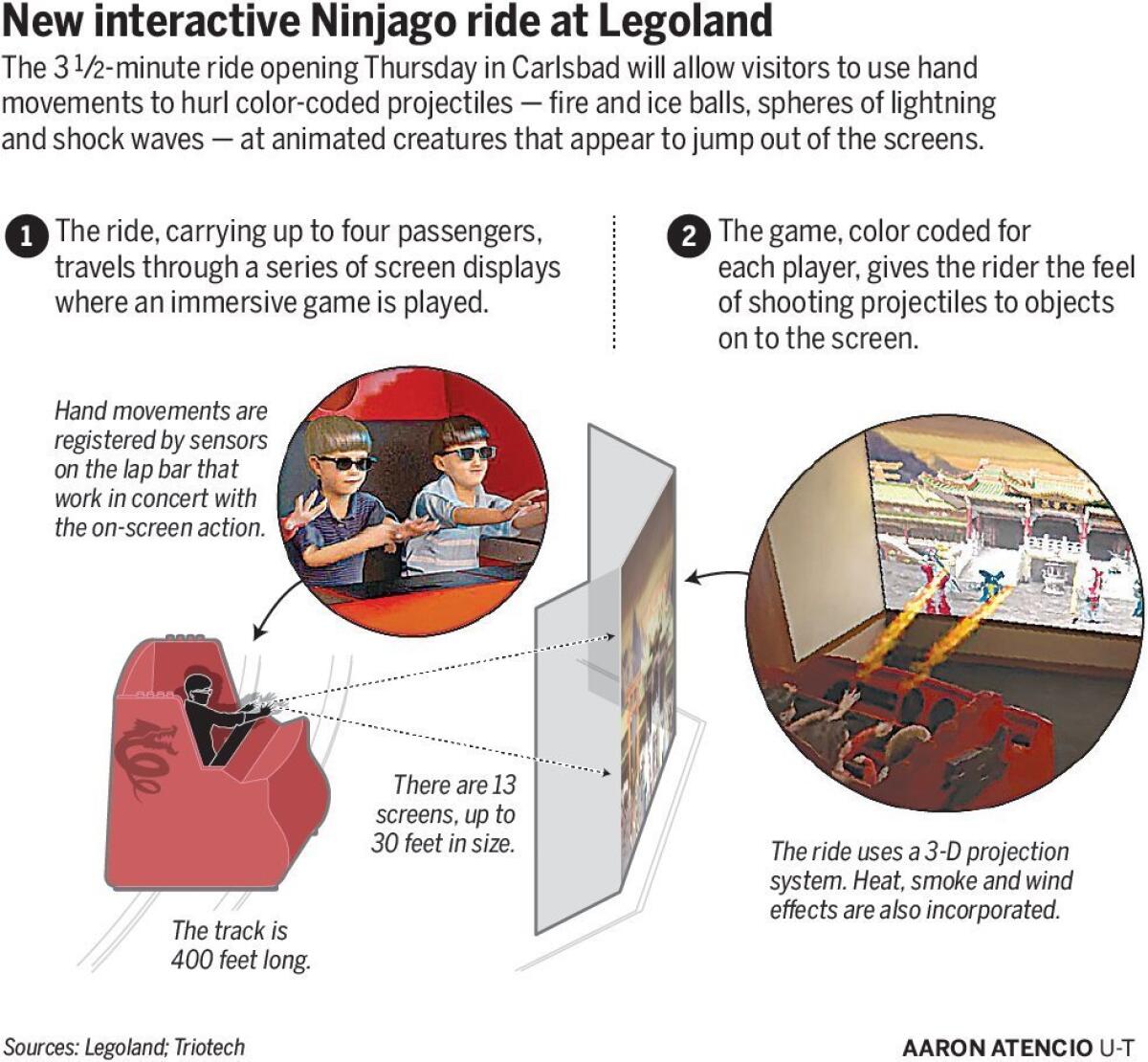
The Ninjago ride, inspired by the popular Lego line of Ninjago toys and a related TV series, owes its hand-gesture feature to Triotech, a Montreal firm that pioneered what it’s dubbed the Maestro technology. While not exclusive to Legoland, it will be incorporated into rides at all of the Legoland parks.
Youngsters and their parents, seated in four-person vehicles and wearing 3-D glasses, will be instantly immersed in the Ninjago story line as motion-sensing technology embedded in the lap bars detects hand movement above it.
Intended to be warriors in training under the watchful eye of Ninjago character Master Wu, riders are challenged to vanquish a legion of enemies, from snake tribes, ghosts and skeletons to the menacing Great Devourer. Using hand movements, guests hurl virtual, color-coded projectiles — fire and ice balls, spheres of lightning, and shock waves — at animated creatures that appear to jump out of 30-foot screens.
Along the way, special effects like dangling spiders, skeletons popping out of a barrel and bees emerging from a hive (when blasted) enliven the action.
The Ninjago adventure culminates with the reappearance of the Great Devourer, a monstrous snake who ultimately explodes in a huge flash of green after a barrage of all of the virtual artillery fired by hand-waving, karate-chopping riders.
All along the way, a dashboard in the vehicles track the players’ scores, as they compete with friends and family members, a feature that Legoland is hoping will ensure repeat visits.
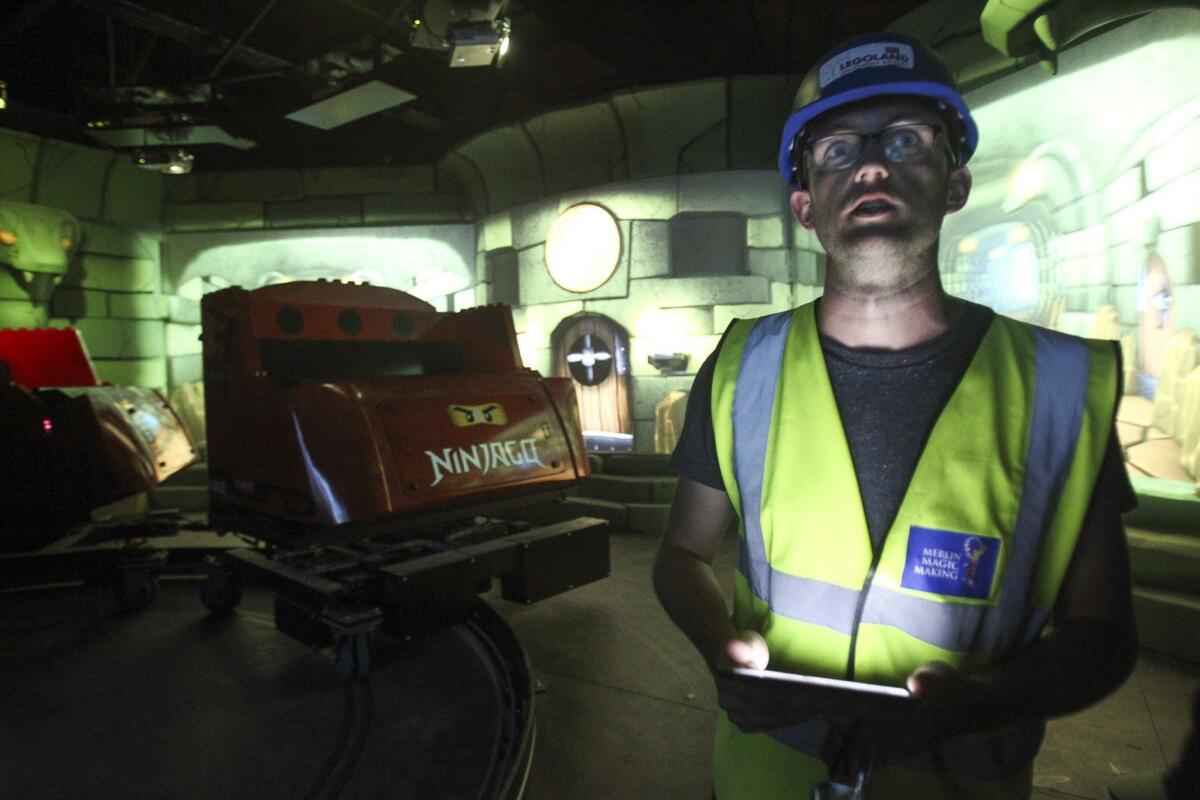
Triotech Marketing Vice President Christian Martin explained that as lap-bar sensors detect hand motions, the company’s proprietary software is able to calculate where the guests are aiming their hands. That calculation, in turn, helps direct the virtual projectiles toward the right spot on the screen.
“This is all in 3-D, so the guest really has the impression that the projectile comes out of his hands,” Martin said. “Secondly, everything happens in real time. Nothing is pre-rendered, so this (makes) the guest an integral part of the adventure and not a passive observer.”
The ride is part of a new 1-acre attraction called Ninjago World, which re-creates an Asian-style temple housing both the ride and a shop selling licensed merchandise. A large courtyard is an interactive playground of sorts, with a rock-climbing wall, spinners to test youngsters’ agility and a monastery fashioned from 850,000 Lego bricks, which kids can embellish with their own Lego creations.
Some 22 new Lego models, including guardian dragons, shields and Ninja warriors, also populate the new area.
While Legoland caters to a very specific age group, generally children 12 and under, it still has to compete with other Southern California parks for families’ discretionary dollars. With the recent debut of Universal Studios Hollywood’s enormously popular Wizarding World of Harry Potter and Disneyland’s ambitious plans for a Star Wars land, the competition will grow even fiercer.
Legoland California General Manager Peter Ronchetti acknowledges that the park, if it wants to remain competitive, needs to keep pace with rapidly changing innovations in the theme park and home entertainment arenas. He won’t reveal Ninjago’s price tag but says it represents the park’s biggest investment yet in a ride.
“This is really the start of a new journey for us as a business in (connecting) the physical bricks with the new technology,” said Ronchetti. “I think there will be quite a few more steps to take, and it’s a technology that’s developing very fast. We’ve broken into that world very early. Ten years ago, this technology wouldn’t have been available at any cost.”
While interactive attractions have become de rigueur for theme parks, it’s only in the last year or two that the technology has measurably improved, said Daryl White, president of Cavu Designwerks, a year-old attractions company whose employees have worked on a number of high-profile attractions, including Harry Potter.
And interactivity doesn’t have to be limited to highly sophisticated rides. Universal’s Harry Potter attractions and Great Wolf Lodge in Garden Grove, for example, both feature interactive wands with special powers to cast spells or unlock clues in a mystery-filled treasure hunt.
“For us, we are developing many more gesture-based interactive attractions and are in the middle of doing one right now that we can’t talk about publicly,” he said. “We’re seeing huge changes in the gesture technology where you’re able to set up cameras and create an infrared picture of the person and then break that down to see what their hand gestures are aiming at.
“It’s a very big issue with theme parks now to provide an experience guests can’t have at home. If you have all these people playing Halo for hours in their basement, what is going to draw them off their couch and into a theme park?”
The latest, greatest thrill-inducing roller coaster still holds a hallowed spot in today’s theme parks, said industry consultant Dennis Speigel, but they, too, are being retrofitted to become more interactive.
As an example, he pointed to the nine Six Flags parks where riders will be able to strap on virtual reality headsets offering 360-degree views and action synchronized to the movement of the coaster.
Triotech CEO Ernest Yale agrees that the new technology won’t necessarily displace the traditional amusement park ride but elevate it to a new, immersive experience.
“When you look at rides that are not interactive, you’re transported to a virtual world, but now you can be part of the story, you can have a score, succeed or fail, and there’s a competitive aspect where kids can try to have a higher score than their friends,” said Yale, whose company has 225 attractions in more than 50 countries.
“In the next few years, there will be a lot of new things that come out, and we’ll find out what kids like. It’s like a new paradigm for amusement parks.”
lori.weisberg@sduniontribune.com (619) 293-2251 Twitter: @loriweisberg
Get U-T Business in your inbox on Mondays
Get ready for your week with the week’s top business stories from San Diego and California, in your inbox Monday mornings.
You may occasionally receive promotional content from the San Diego Union-Tribune.

